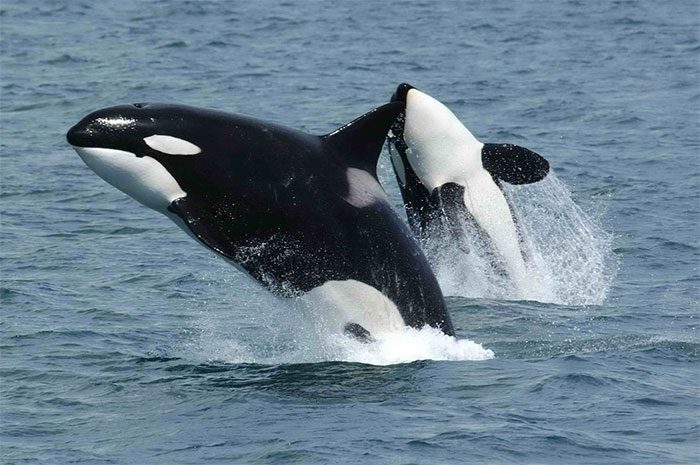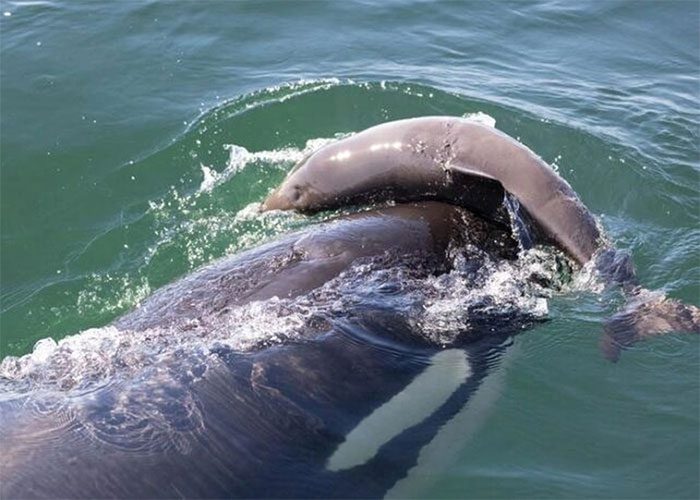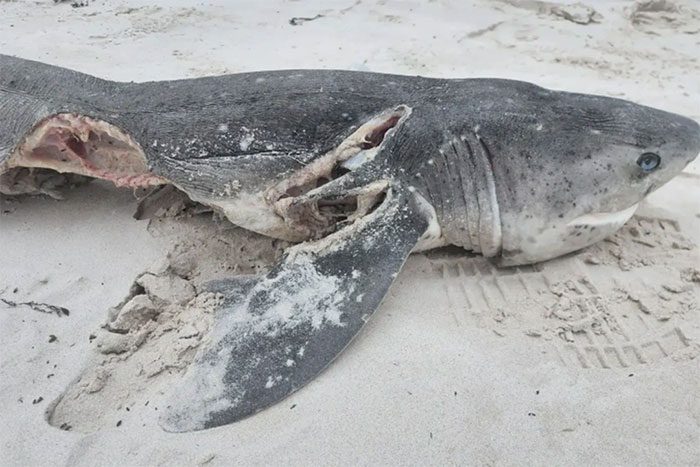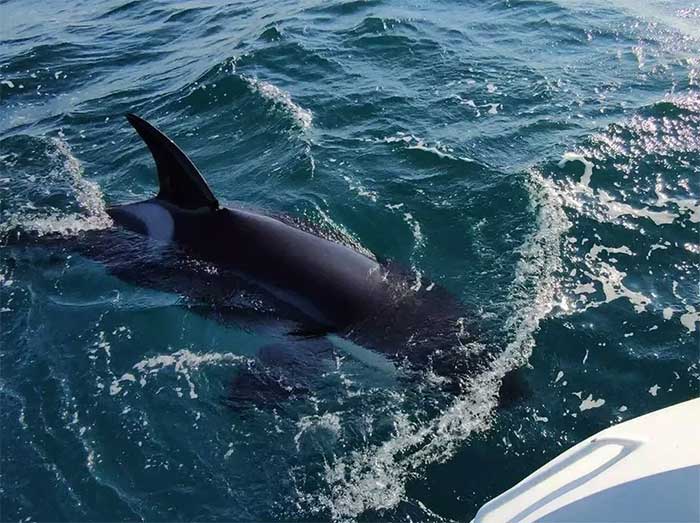Science Still Cannot Accurately Explain the Unusual Aggressive Behavior of Orcas. Meanwhile, the number of their attacks continues to rise.
Killer whales (Orcinus orca) are a particularly unique species, being apex predators in the ocean with no significant natural enemies other than humans.

Killer whales near Unimak Island, eastern Aleutian Islands, Alaska. (Photo: Getty).
In reality, killer whales are quite selective eaters. They primarily feed on Chinook salmon—a migratory fish that lives in the ocean—and typically consume several dozen of them each day.
However, for unknown reasons, orcas in certain areas, especially in the Pacific Northwest, have recently begun displaying bullying behavior towards other species. Their victims may include dolphins, whales, and even sharks.
According to Science Alert, pods of killer whales have been observed playing a game of “dolphin tossing,” wherein they throw the unfortunate creature from one individual to another.

Orcas killing their victims in their ‘game.’ (Photo: CC BY-NC-ND).
Observers often think that they are just playing with the dolphin and will eventually let it escape. However, in reality, their victims often die after this cruel game, leaving their bodies floating in the ocean.
The most commonly attacked species are harbor porpoises (Phocoena phocoena) and Dall’s porpoises (Phocoenoides dalli). Curiously, none of the victims are eaten. Not only dolphins but even sharks have become targets of orca attacks.
In March, a pair of killer whales off the coast of South Africa reportedly killed 17 sharks in a single hunting trip. Researchers from the Marine Conservation Trust reported that the bodies of these sharks were washed ashore due to storms and high tides. This was the largest number of sharks killed by two killer whales in a single hunt.

The remains of one of the sharks that fell victim to the killer whales. (Photo: Marine Conservation Trust).
All the sharks that were killed were mature, some reaching lengths of up to 3 meters. A common characteristic of the victims was that their bellies were ripped open and their organs were consumed.
Not stopping there, recently, orcas in the waters near the Iberian Peninsula (Mediterranean region) have continuously attacked sailing boats for reasons that remain unknown.
Researchers have collaborated and recorded over 200 reports of encounters with killer whales, where these animals approached or collided with boats along the coast of the Iberian Peninsula, covering areas of Spain and Portugal since 2020.
In 2020, the media reported a series of aggressive actions by killer whales in these waters. At that time, scientists proposed various hypotheses that these animals might be acting out of curiosity, playfulness, or asserting territorial claims.

The number of orca attacks on boats continues to rise, but no one knows the motive behind it. (Photo: Twitter).
Alfredo López, a biology professor at the Marine Mammal Research Coordinator (CEMMA), stated: “This is not revenge. They are just acting as a precaution.“
According to Professor López, the orcas do not seem to have a premeditated plan to cause harm to boats. “We speculate that the pod of killer whales does not intend to attack humans,” he said.
Nonetheless, these remain mere hypotheses. Currently, scientists still cannot accurately explain the unusual aggressive behavior of these whales.
Although there are no underwater rivals, some populations of killer whales are still threatened or endangered. The primary reasons include habitat pollution, declining prey availability, conflict with fishing activities, and maritime traffic…




















































